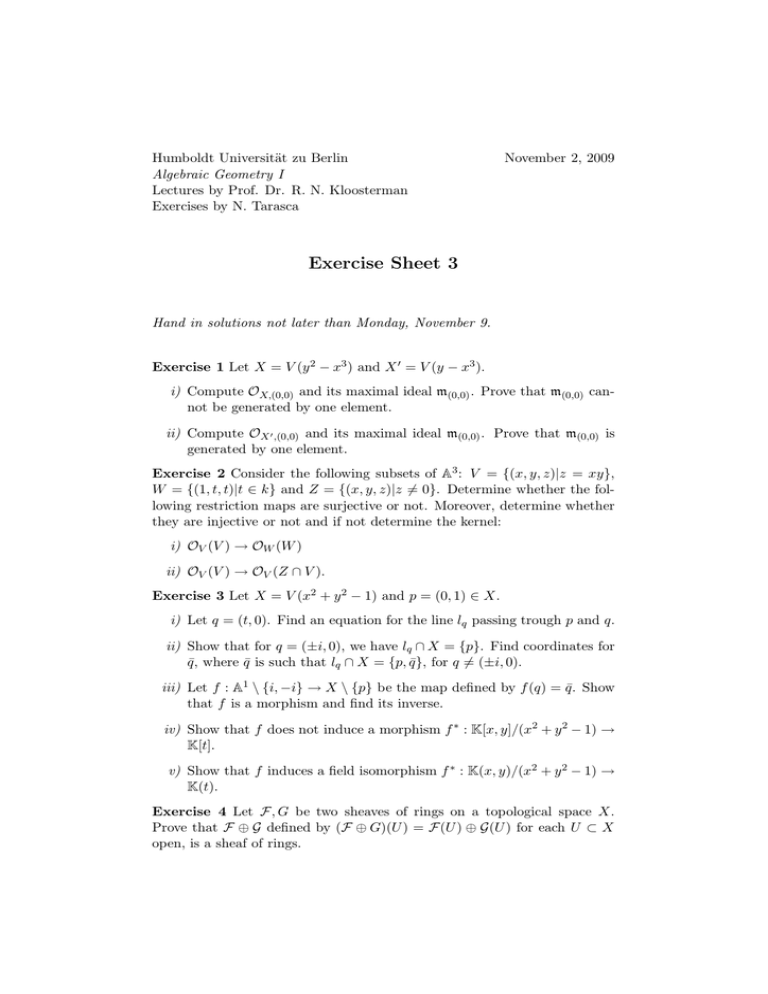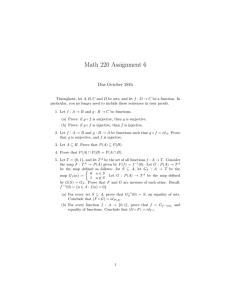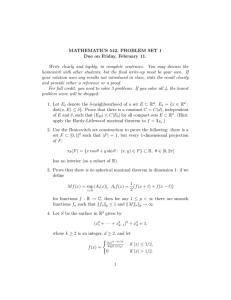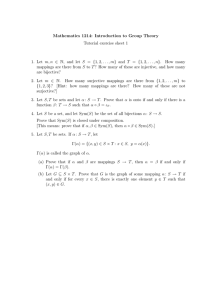Humboldt Universit¨at zu Berlin November 2, 2009 Algebraic Geometry I
advertisement

Humboldt Universität zu Berlin
Algebraic Geometry I
Lectures by Prof. Dr. R. N. Kloosterman
Exercises by N. Tarasca
November 2, 2009
Exercise Sheet 3
Hand in solutions not later than Monday, November 9.
Exercise 1 Let X = V (y 2 − x3 ) and X ′ = V (y − x3 ).
i) Compute OX,(0,0) and its maximal ideal m(0,0) . Prove that m(0,0) cannot be generated by one element.
ii) Compute OX ′ ,(0,0) and its maximal ideal m(0,0) . Prove that m(0,0) is
generated by one element.
Exercise 2 Consider the following subsets of A3 : V = {(x, y, z)|z = xy},
W = {(1, t, t)|t ∈ k} and Z = {(x, y, z)|z 6= 0}. Determine whether the following restriction maps are surjective or not. Moreover, determine whether
they are injective or not and if not determine the kernel:
i) OV (V ) → OW (W )
ii) OV (V ) → OV (Z ∩ V ).
Exercise 3 Let X = V (x2 + y 2 − 1) and p = (0, 1) ∈ X.
i) Let q = (t, 0). Find an equation for the line lq passing trough p and q.
ii) Show that for q = (±i, 0), we have lq ∩ X = {p}. Find coordinates for
q̄, where q̄ is such that lq ∩ X = {p, q̄}, for q 6= (±i, 0).
iii) Let f : A1 \ {i, −i} → X \ {p} be the map defined by f (q) = q̄. Show
that f is a morphism and find its inverse.
iv) Show that f does not induce a morphism f ∗ : K[x, y]/(x2 + y 2 − 1) →
K[t].
v) Show that f induces a field isomorphism f ∗ : K(x, y)/(x2 + y 2 − 1) →
K(t).
Exercise 4 Let F, G be two sheaves of rings on a topological space X.
Prove that F ⊕ G defined by (F ⊕ G)(U ) = F(U ) ⊕ G(U ) for each U ⊂ X
open, is a sheaf of rings.











